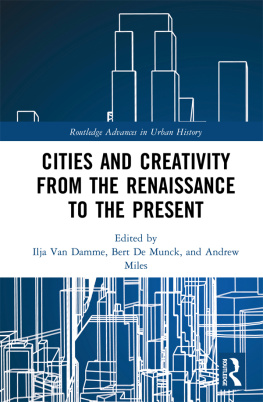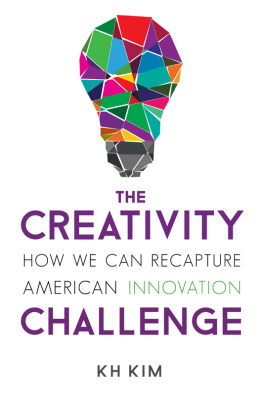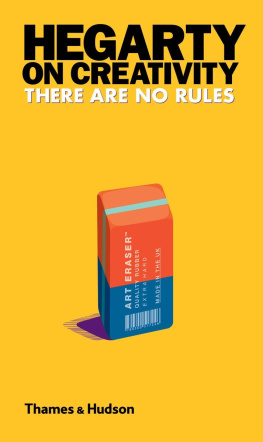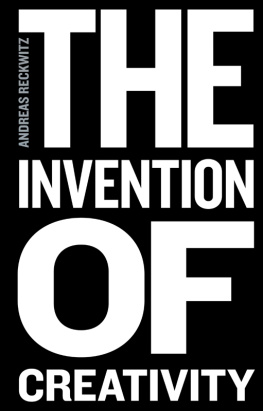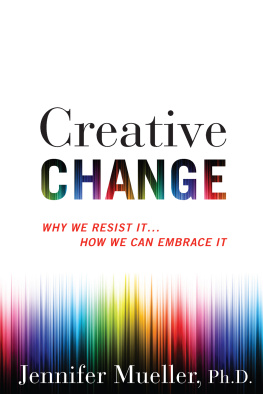Ilja Van Damme and Bert De Munck
Introduction
Making the claim that cities are creative places is hardly original these days. For a good two decades already, a tsunami of academic opinions has engulfed urban theory and policy to assert the primacy of cities as key places to look at when discussing distinctive but related concepts such as the creative city, the creative economy, the creative class or creative industries. Such is the state of the field today that anyone daring to delve deep into the genealogy of the creative city debate could easily fill a monograph by just doing so. Nevertheless, in this first, introductory chapter to this book, we aim to historically contextualise much of the recent literature on the relationship between cities and creativity. Moreover, with this introduction and the rest of our collective volume, we hope to infuse a certain open-ended historical reflexivity within a debate that until now has been mainly dominated by urban policymakers and urban theorists. By focussing on aspects of time and significance of place, this book aims to reveal and problematise the main ideological and epistemological grounds on which the city-creativity nexus is built. It is through historical description and by analysing the historical fabrication of creative cities on both a discursive and material level that we have crafted in the following pages an innovative, interdisciplinary niche within the burgeoning creative city literature. This approach breaks away from an overtly deterministic, ahistorical, and essentialist approach towards the subject at hand.
The ideas and conceptual constructs that run through the remainder of this first chapter and volume are all informed by the notion that the creative city is not a self-evident, objective or ontological state of being but rather a complex, heterogenic process of becomingor better even, an historical assemblage on a discursive and material level (on the notion of assemblage, read Marcus and Saka, 2006; Farias, 2011; Brenner, Madden and Wachsmuth, 2011). Conceptualisations defining the creative city as a more or less stable realitya trans-historical ontological unity, acting and driven by an inherent natural logicare no longer tenable in the light of present-day understanding and theories of how cities work and function. Within recent urban theory, the urban is increasingly understood as a complex and unstable reality, a hybrid and layered network made up of a multiplicity of human actors and nonhuman actants. The urban is now referred to as a historic constellation or as something splintered, assembled, fabricated and mythologised (see Massey, Allen and Pile, 1999; Graham and Marvin, 2001; Amin and Thrift, 2002; Gandy, 2011; Brenner, 2013).
In this book as well, a city not only becomes fabricated or mythologised for various reasons as creative on a representational level; at the same time, such imaginaries are revealed to feed back into contingent and historic and place-specific economic and political practices and in the built form of the city, thus creating, eventually, path-dependent structures, stabilities and continuities over the long run. Therefore, the specific, relational combination or historical assemblage of stuff (Molotch, 2003)the myriad, and mostly historically very contingent ways in which values (freedom, tolerance, diversity), actors (academics, entrepreneurs, artists, inventors), institutions (museums, academies, universities), discourses, practices and inanimate physical actants (buildings, commodities, technologies) have left physical and symbolic traces in the urban fabricwill in this book be seen as constituting a creative city. What follows is not so much about what a creative city is or was, how it functions or how it can be best applied as an urban development strategy all around the worlda sort of approach that is in line with a dominant but in our opinion superficial historiography. Rather, throughout the following chapters, the focus shifts towards a historical description and analysis of concrete time- and place-specific contexts, people, discourses and material elements (e.g., mountains in the chapter by Saez and street signs in the one by Williams and OBrien) acting as mediators and intermediaries in bringing about the creative city as a concrete lived and historical experience.
We do this by bringing authors from a wide range of disciplines together, all eager to break with reductionist and naturalising modernist viewpoints on cities and creativity. Given the importance of long-term fabrications or myths of the creative city as a discursive and material reality, a great deal of the participating authors are historians. But we also have included contributions from researchers working within management studies, urban cultural policy, sociology, education, architecture, media and culture, and geography. All share a strong believe in the value of historical approaches to contribute to and broaden current urban theory and policy.
In this first, introductory chapter, our goal is to open the main black boxes on which our current, mainstream notions of the creative city restthose modes of thought and knowledge production that no longer [need] to be reconsidered, those things whose contents have become a matter of indifference (Callon and Latour, 1981, p. 285). In a first section, we argue that the creative city paradigm has in the past twenty years become a black-boxed signifier for both its proponents and adversaries. The creative city has become a meaningful sign in itself, apparently understood and unquestioned regarding some of its basic and structuring assumptions. This had led to a curious situation in which the central notion on which the creative city debate restsnamely, the idea that cities have creative agencyis no longer seriously questioned or examined. In section two of this introductory chapter, we offer a way out of this deadlock by focussing precisely on the agency of cities and describing the ways in which this notion has become deeply entrenched within urban theory. Following up on this, in a third and last section, we focus on the questions and choices from which this edited volume takes its cue, and we discuss how we hope to infuse new life in a concept that seems to have run out of steam.
From New Hope to New Fear: Historicising the Creative City Debate
This first section starts from the assumption that a certain set of historical changes, gaining traction from the 1970s onwards in Atlantic economies, has led to the construction of what Jessop (2004, pp. 166170) calls an increasingly dominant and hegemonic discourse or economic imaginary framing all broader societal struggles on various scales, namely that of the knowledge-based economy. The ascendance of this powerful and performative master narrative (Callon, 2007) goes back to a series of influential treaties all proclaiming an inevitable rise in the West of what Touraine (1971) and Bell (1973) coined the post-industrial society. Such post-Fordist (Piore and Sabel, 1984), post-modern (Harvey, 1989a; Soja, 1989) or post-capitalist (Drucker, 1993) geographies were believed to entail an irreversible dominance of a so-called open form of free-trade globalisation, urging Western nations to abandon standardised mass production and to specialise in human capital formation and knowledge creation. It was believed that only by means of a system of flexible diversification, developed economies in America and Europe could outwit countries with alternative competitive advantages (e.g. cheap labour, abundant raw materials; see Porter, 1985). This entailed using the new information and transport systems and fundamentally changing the nature of their production and technologies. The goal was producing and marketing goods and services with aesthetic, cultural and symbolic attributes (Lash and Urry, 1994; Zukin, 1996). Thus, rather than holding on to old core productive industries (steel, textiles, petrochemicals, and so on), which it was thought anyway would eventually be delocalised in an increasingly global, liberal, post-ideological world order, Western economic actors and policymakers were urged to invest in idea- and knowledge-heavy cultural and creative industries or the cultural economy (Scott, 1997).

